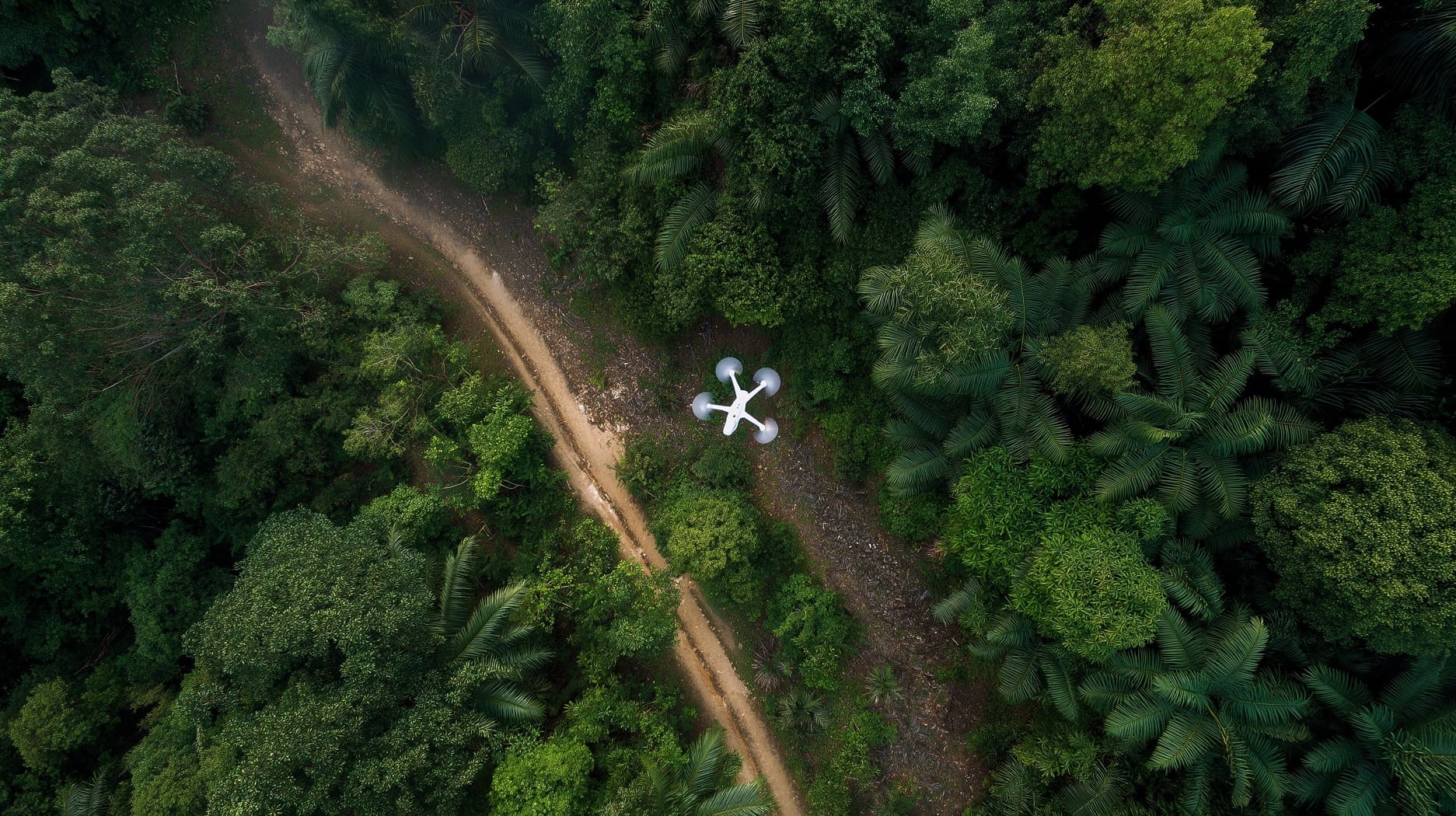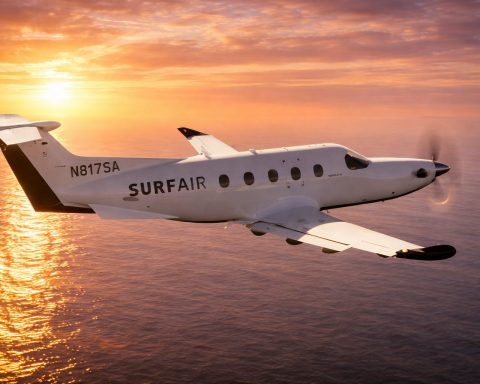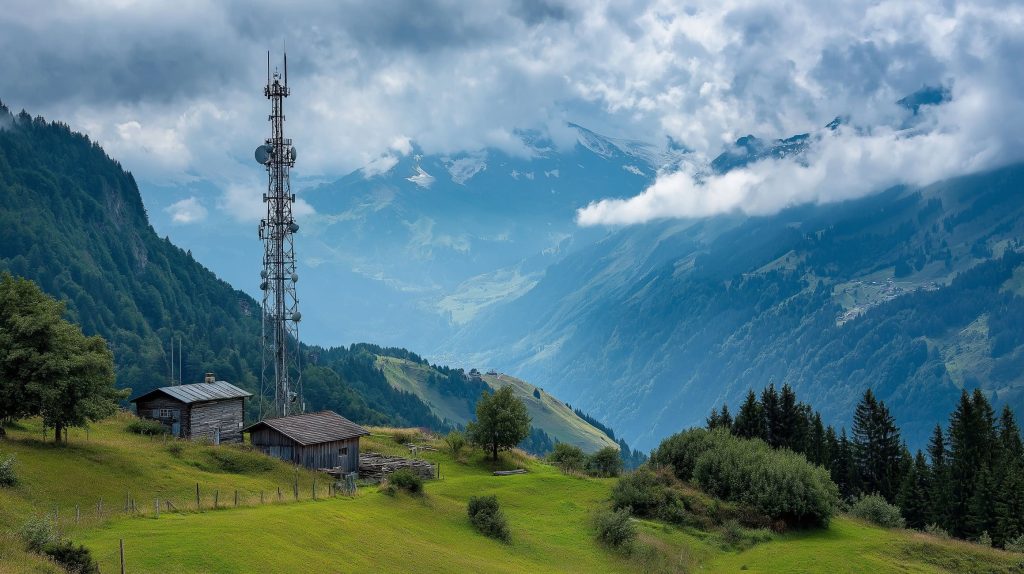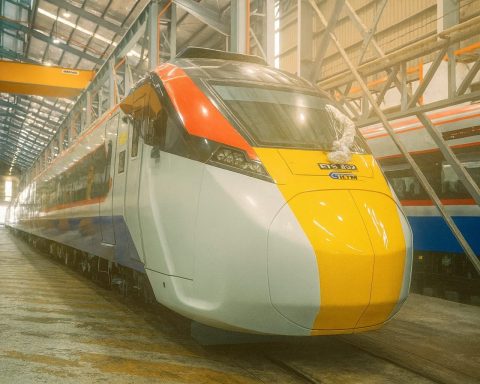- As of early 2025, CAAM requires a permit for every drone flight in Malaysia, with an Authorisation To Fly (ATF) permit required before take-off for all operations.
- Drones are categorized by weight as ‘small’ up to 20 kg and ‘large’ above 20 kg, with drones heavier than 20 kg banned from operation unless specially authorized by CAAM.
- Commercial and recreational operators must obtain an ATF permit for each operation, with applications requested at least 14 days before flight.
- Drone permit fees are RM250 per permit for drones under 20 kg and around RM1,000 for drones above 20 kg; by late 2025 CAAM plans to switch to a pay-as-you-fly model at RM1.50 per 30 minutes of open-air flight.
- Remote Pilot Certificate of Competency – Basic (RCoC-B) is strongly encouraged for many commercial drone activities, with CAAM-approved RPTOs offering a 5–8 day training course.
- Drones cannot operate in airports’ aerodrome traffic zones and must obtain CAAM authorization for any operation in Class A, B, C airspace, and even Class G airspace.
- Drones cannot be flown over densely populated or sensitive areas without permission, and CAAM prohibits flight over open-air assemblies of 1,000 or more people.
- Operational safety guidelines cap altitude at 120 meters (400 feet) and require Visual Line of Sight (VLOS), with BVLOS flights allowed only with CAAM approval and speeds kept under 100 km/h.
- There is no legal requirement for recreational drone insurance in Malaysia, but third-party liability and hull insurance are commonly required for commercial operations and permit conditions.
- Foreign tourists must obtain CAAM permits in advance (standard lead time around 14 working days) and may also need Sabah or Sarawak state approvals, with foreign drone licenses not automatically recognized.
Malaysia has implemented strict drone regulations through the Civil Aviation Authority of Malaysia (CAAM) to ensure safety and security. All drone operations – whether for recreational fun or commercial work – are governed by the Civil Aviation Regulations 2016 (Part XVI) and related directives [1]. This report provides a detailed overview of Malaysia’s drone laws, including rules for hobbyists and businesses, licensing and registration steps, no-fly zones, penalties for violations, insurance and safety guidelines, recent legal updates, tourist considerations, and the authorities involved.
Regulations for Recreational vs. Commercial Drone Use
All drone flights in Malaysia require authorization. CAAM has made it clear that “no permit, no fly” applies across the board – even low-risk recreational flights must obtain approval before take-off [2]. In other words, whether you are flying a drone for fun or for business, you need to follow Malaysia’s drone rules and secure the proper permits.
- Recreational Drones: Hobbyists are subject to the same airspace and safety restrictions as any other operator. Historically, small drones flown in open areas were often tolerated without a permit, but as of early 2025 CAAM now requires a permit for every flight, regardless of purpose [3] [4]. Recreational users must keep operations low-risk – e.g. within visual line of sight (VLOS), under 120 m altitude, and away from people or airports – and obtain a Standard “Authorisation To Fly” (ATF) permit from CAAM before flying.
- Commercial Drones (Aerial Work): Using a drone for any business, professional, or “aerial work” purpose (such as filming events, surveying, inspections, agricultural spraying, etc.) explicitly requires CAAM authorization under Malaysian law [5]. Commercial operators generally must apply for an ATF permit for each operation, just like recreational fliers. In addition, certain complex operations fall into specialized categories that need extra certification – for example, agricultural spraying missions require an Unmanned Aerial Work Certificate (UAWC), and high-risk activities like beyond-visual-line-of-sight (BVLOS) flights or drone deliveries need a Special UAS Project Approval [6] [7]. Practically speaking, any drone use beyond basic hobby flying (e.g. for filming, surveying, or any service) is regulated and permission must be obtained in advance.
It’s worth noting that Malaysian regulations categorize drones by weight: “small” drones up to 20 kg and large drones above 20 kg. All drones heavier than 20 kg (without fuel) are banned from operation unless specially authorized by CAAM [8]. Most consumer and professional drones fall under 20 kg, but they still require permits per flight. In summary, both recreational pilots and commercial operators must follow the same core rules – stay within approved flight parameters and always secure CAAM’s permission to fly.
Licensing and Registration Requirements
Operating a drone in Malaysia involves both registering the drone and obtaining a permit, and certain uses may require pilot certification:
- Drone Registration & ATF Permit: Before flying in Malaysia, you must register your drone and apply for an Authorisation to Fly (ATF) permit with CAAM [9]. This process should be done at least 14 days before the intended flight. Applicants need to fill out the required forms (available from CAAM) with details about the pilot, drone specifications (including SIRIM equipment approval, if applicable), and the planned flight, then email the application to CAAM’s UAS unit [10] [11]. Each ATF permit is typically valid for a specific activity or period, meaning you need a permit for each separate drone operation [12].
- Fees and Weight Categories: There is a fee for obtaining the drone permit, based on the drone’s weight. Drones under 20 kg currently incur a RM250 fee per permit [13]. For drones above 20 kg, the fee is higher (around RM1,000) [14]. These fees are part of the application process and help cover the administrative cost of safety oversight. (Note: Big regulatory changes are underway – by late 2025, CAAM plans to switch to a new fee system charging as low as RM1.50 per 30 minutes of flight in open categories, replacing the flat RM250 fee [15] [16]. This usage-based pricing is intended to make compliance more affordable for frequent flyers. More on these updates later.)
- Remote Pilot Licensing (RCoC-B): While recreational users are not required to hold a formal pilot’s license, those flying drones commercially or for advanced operations are strongly encouraged to obtain a Remote Pilot Certificate of Competency – Basic (RCoC-B). The RCoC-B is essentially a drone pilot license endorsed by CAAM, demonstrating that the pilot has completed training in air law, safety, operations, and passed an evaluation [17]. In fact, CAAM requires an RCoC-B for many commercial drone activities, and it’s a prerequisite if you plan to offer drone services professionally [18]. Training for this certificate is offered via CAAM-approved training organizations (Remote Pilot Training Organisations, RPTOs) and typically involves a 5–8 day course plus practical assessments [19] [20]. While not mandatory for casual hobbyists, the RCoC-B or similar competency proof may be needed when applying for certain permits or if operating in the “specific” risk category. It’s part of Malaysia’s efforts to ensure drone pilots are qualified to handle their equipment safely.
- Drone Marking and SIRIM Requirements: Every drone brought into Malaysia should meet technical standards. The Standards and Industrial Research Institute of Malaysia (SIRIM) regulates drone hardware for safety and electromagnetic compliance [21]. If you purchase a drone locally, it likely has SIRIM approval. Foreign or custom-built drones should also conform to approved radio frequencies (2.4 GHz, 5.8 GHz, etc.) set by the Malaysian Communications and Multimedia Commission (MCMC) [22]. When registering your drone, you may need to provide its specifications; CAAM’s form asks for the SIRIM certificate or proof of compliance [23]. Also, although not a formal “license”, once your drone is approved and permitted, you should carry a copy of your CAAM permit and any registration documents when flying as proof of legality.
In short, drone operators must do some homework before flying in Malaysia: apply for CAAM’s authorization with all required info, pay the applicable fee, and (for commercial operators) ideally obtain a competency certificate. Skipping these steps can lead to your drone being considered “unregistered” or your flight “unauthorized,” which carries heavy penalties (explained later) [24].
No-Fly Zones and Restricted Airspace
Malaysia imposes strict no-fly zones and airspace restrictions for drones to prevent conflicts with manned aircraft and protect sensitive areas. Under Regulation 140 of CAR 2016, it is illegal to fly a drone in certain airspaces or locations without CAAM’s explicit permission [25]. Key restricted areas include:
- Near Airports and Aerodrome Zones: Drones must stay well away from airports, airfields, and heliports. Specifically, no drone operations are allowed within the “aerodrome traffic zone” of an airport [26]. This roughly translates to staying at least 4–5 km (3+ miles) away from any airport as a general rule of thumb [27]. Flying near runways or flight paths is strictly prohibited without special clearance. Authorities treat airport violations very seriously due to the risk posed to passenger aircraft.
- Controlled Airspace Classes: By default, drones are not allowed in Class A, B, or C airspace (these are controlled airspaces used by commercial and military aircraft) without CAAM authorization [28]. Notably, even Class G airspace (uncontrolled) is off-limits to drones unless you have a permit [29]. This effectively means any airspace in Malaysia requires approval, since Class G covers the general airspace where hobby drones might fly. The intent is to ensure drone pilots always coordinate with CAAM, regardless of location.
- Urban Centers and Sensitive Locations: Drones cannot be flown over densely populated or sensitive areas without permission. For example, downtown Kuala Lumpur (KL) has no-fly restrictions, especially around key landmarks like the Petronas Twin Towers and governmental complexes [30]. Royal palaces, military facilities, and strategic infrastructure are also typically designated no-fly zones [31]. Additionally, flying over any “designated area” – meaning residential, commercial, or recreational urban areas – is restricted for drones with cameras (to protect privacy and security) [32]. CAAM regulations prohibit flight over any open-air assembly of ≥1,000 people as well [33], so you cannot buzz a drone over concert crowds, sporting events, parades, etc.
- National Parks and Wildlife Areas: Malaysia’s national parks (e.g. Taman Negara, Sabah parks) often have their own rules requiring a permit to fly a drone inside park boundaries [34] [35]. If you plan to film wildlife or landscapes in a park, you must obtain a permit from the park authority in addition to CAAM’s permit. Many parks restrict drone use to prevent disturbance to wildlife or other visitors. Always check local rules – some parks impose fees (for instance, recreational drone permits might cost RM100–500 at a park office, and much higher for commercial filming) [36].
- General Distance Limits: Even outside the above no-fly zones, drone pilots must maintain safe distances. Do not fly within 50 m of any person, vehicle, building, or structure that’s not under your control [37]. During takeoff and landing, a 30 m minimum distance is required [38]. Essentially, keep a wide berth from bystanders and property to avoid accidents or privacy violations. Also, never launch a drone from a moving vehicle or aircraft – that is not allowed [39].
In summary, Malaysia’s airspace rules for drones are quite restrictive: avoid airports, stay out of populated or sensitive areas, and only fly in locations and altitudes that CAAM has authorized in your permit. CAAM may grant exceptions for special cases (e.g. professional film shoots in the city or research drones), but those are handled via the detailed permit process. Always plan your flight location carefully and consult CAAM if unsure. Flying in a prohibited area without clearance can lead to immediate enforcement action – authorities are particularly vigilant about airport zones and high-security locations.
Penalties and Enforcement for Violations
Malaysia has severe penalties for drone law violations, reflecting how seriously the government treats airspace safety and security. If you fly a drone without the required permit or break the operational rules, you could face heavy fines, imprisonment, or both:
- Flying Without a Permit / Unregistered Drone: Operating a drone in public without CAAM approval is an offense. Individuals caught flying without a permit can be fined up to RM50,000 and/or jailed for up to 3 years under the civil aviation laws [40]. For corporate entities (e.g. a company that deploys a drone illegally), fines can go up to RM100,000 [41]. These penalties apply to various infractions such as failing to register the drone, not obtaining the ATF flight permit, or conducting unapproved aerial work. Authorities have explicitly warned that “conducting operations without the necessary permits will result in penalties” per the regulations [42].
- Unsafe Flying & Other Offenses: Even with a permit, if a drone pilot violates safety conditions – for example, flying recklessly, entering restricted zones, endangering others, or dropping objects from the drone – enforcement actions can be taken. Specific violations (like flying over a crowd or near an airport) could be prosecuted under particular provisions of the law. Penalties may vary, but as a guideline, the range of penalties goes up to the RM50k fine/3-year imprisonment level for serious breaches [43]. In less severe cases or first offenses, authorities might issue warnings or smaller fines, but the legal maximums are high, indicating zero tolerance for dangerous drone behavior.
- Enforcement Actions: The enforcement of drone laws in Malaysia involves multiple agencies. CAAM’s enforcement officers and the police can investigate and take action against illegal drone flights. Drones may be confiscated if flown without approval, and operators can be charged in court. In recent years, CAAM has ramped up enforcement – for instance, after incidents of rogue drones near airports, they announced crackdowns on unauthorized flights [44]. In 2024, CAAM identified many training sessions and commercial shoots being done without permits and has since tightened oversight [45]. The public is also encouraged to report illicit drone activities. So far, Malaysia’s approach has been to educate first – CAAM offers guidance and even hand-holding through the permit process [46] – but if an operator blatantly ignores the rules, legal prosecution is on the table.
- Privacy and Other Laws: Apart from aviation regulations, drone users could run afoul of privacy, security, or other laws. For example, using a drone to spy on someone or to record in a restricted area can lead to charges under Malaysia’s surveillance/privacy statutes or even national security laws. Enforcement agencies like the Chief Government Security Office (CGSO) and Royal Malaysia Police monitor for drones in prohibited government or military areas [47]. The bottom line is that non-compliance can have serious consequences – heavy fines, criminal records, or jail – so it’s imperative to fly responsibly and within the law.
Malaysia’s stringent penalties underscore the need to always obtain the proper permits and follow the rules. There have been publicized warnings and examples to deter would-be violators. By complying with CAAM regulations, you not only avoid legal trouble but also help foster a safer airspace for everyone.
Insurance Requirements and Safety Guidelines
Insurance: Surprisingly, there is currently no legal mandate to carry insurance for recreational drone flights in Malaysia [48]. Hobbyist pilots are not required by law to buy liability or hull insurance. However, it is strongly recommended – accidents can happen, and you could be liable for any injury or property damage your drone causes. For commercial drone operations, while not explicitly required by the regulations, having adequate insurance is effectively the industry standard. Many commercial clients or event organizers will insist on proof of insurance before allowing drone operations. Additionally, if you’re flying a heavy drone or doing something higher-risk, CAAM may ask for an insurance plan as part of the permit conditions (to ensure any third-party damage can be covered). In short, no law forces you to insure your drone, but it’s wise to do so. Third-party liability insurance protects you in case your drone injures someone or causes damage, and hull insurance can cover your own drone’s losses. Several insurers (local and international) offer drone coverage in Malaysia, and policies can be obtained on a short-term basis for specific projects or annually for frequent operators [49]. Given the relatively low cost of insurance compared to the potential RM50k fines or lawsuits, it’s a prudent safety net.
Safety Guidelines: Malaysia’s drone rules encompass a set of operational safety guidelines that all pilots must adhere to. These ensure you fly in a manner that minimizes risk to others and to manned aircraft. Key safety rules include:
- Max Altitude = 120 meters (400 feet): You must not fly your drone higher than 120 m above ground level [50]. This altitude cap is standard to keep drones well below manned aircraft cruising levels. Flying above 400 ft requires special CAAM permission, which is generally only given in controlled conditions or remote areas.
- Visual Line of Sight: Always keep your drone within direct eyesight of the pilot (or an observer) at all times [51]. Using binoculars or solely first-person-view (FPV) cameras is not a substitute – you need to be able to see the drone with unaided eyes. Flying Beyond Visual Line of Sight (BVLOS) is not allowed unless you have a specific BVLOS operation approval from CAAM [52].
- Weather and Time of Day: It is advised to only fly during daylight hours and in good weather [53]. While Malaysia doesn’t explicitly ban night flying in the general regulations, getting night operations approved would require demonstrating safe procedures (lighting on the drone, etc.). For most users, stick to daytime when visibility is clear. Avoid flying in rain, high winds, or low-visibility conditions which could lead to loss of control.
- Keep Speed Under 100 km/h: Drone flights should remain at a reasonable speed – a commonly referenced guideline is to stay below 100 km/h (approx 60 mph) [54]. This helps with control and collision avoidance. Most off-the-shelf drones can’t reach that speed anyway, but racing drones might. High-speed operation in a congested area would likely be viewed as reckless by authorities.
- Right-of-Way to Manned Aircraft: If you ever find yourself in the vicinity of a helicopter or low-flying plane, yield immediately and give way [55]. Descend or move aside – manned aircraft always have priority, and it’s your duty to avoid them. Also, if flying near a model airplane field or another drone operator, coordinate to avoid mid-air encounters.
- No Dropping Objects: It’s explicitly prohibited to drop any object from a drone during flight without special permission [56]. This includes release of payloads, spraying liquids, etc., unless you have an agricultural drone permit or similar. Dropping items can be dangerous to people and property below.
- Privacy and Etiquette: While not a specific “air law,” respecting privacy is part of safe and responsible flying. Do not hover over private homes or people’s backyards without permission. Under Regulation 143, using “small unmanned surveillance aircraft” (drones with cameras) has additional restrictions – you must avoid flying within 150 m of residential or commercial areas unless authorized [57]. Always be considerate; intrusive drone use can lead to complaints or other legal troubles.
By following these safety guidelines, you greatly reduce the chance of accidents and ensure you remain on the right side of the law. Malaysia wants to encourage innovation in drone usage, but only if it’s done safely and responsibly. CAAM has published checklists and even pre-flight risk assessment templates to help operators fly safely [58] [59]. Remember that as a drone pilot, you are responsible for every flight you conduct – so always double-check your plan (location, weather, battery, equipment) before take-off. When in doubt, don’t fly.
Recent Legal Updates, Amendments, and Proposed Changes
The drone regulatory landscape in Malaysia is actively evolving. In the last couple of years (2023–2025), authorities have introduced stricter enforcement and have also been working on overhauling the laws to keep up with technology:
- 2023/24 – Stricter Enforcement Initiatives: In 2024, noticing a rise in unauthorized drone activities, CAAM issued safety directives and warnings to the public. By early 2025, CAAM’s CEO Captain Norazman Mahmud reiterated that every drone operation – even low-altitude recreational flights – must have a permit, and flying without one will incur penalties [60] [61]. This clarification came after instances where people flew drones for weddings, corporate videos, or training sessions thinking it was allowed under 400 ft – CAAM has now made it abundantly clear that no altitude or “hobby” exception exists [62] [63]. As part of this enforcement push, CAAM also reminded operators that applications for permits should be submitted 14 days in advance, and they offered support to ensure compliance [64]. We have essentially seen a transition from a relatively lax enforcement of hobby drones to an environment where all drone flights are tracked and regulated.
- New Comprehensive Drone Regulations (Coming Q4 2025): Recognizing that the current rules (based on 2016 regulations and a 2008 circular) are due for modernization, Malaysia is poised to roll out an updated UAS regulatory framework by the end of 2025 [65]. CAAM has been working with industry stakeholders on a new Civil Aviation Regulation specifically for Unmanned Aircraft, aiming to align with international best practices and accommodate advancements like drone delivery, urban air mobility, and widespread commercial use [66]. The forthcoming framework is expected to provide clearer guidelines for both recreational and commercial use, categorizing operations by risk levels (similar to models used in the US/EU) and streamlining the approval process [67]. CAAM has indicated this new regulation will ensure safety while encouraging innovation and growth in the drone sector [68].
- UAS Traffic Management System (UTM) and Online Permits: Alongside the regulatory revamp, Malaysia is implementing a UAS Traffic Management System (UAS-TMS) by late 2025 to digitize and speed up drone permitting [69] [70]. This is a major shift from the old email-and-paper process. The UTM system will allow drone operators to register, submit flight plans, and get approvals through an online platform or app. The goal is to cut down approval times from weeks to mere hours [71] [72]. In other words, instead of applying two weeks ahead via email, a recreational flyer might request airspace access through an app and get clearance quickly (especially in designated flying zones). This system will also help authorities monitor drone flights in real time and enforce no-fly zones digitally. It’s a similar approach to what countries like Singapore have adopted, bringing Malaysia’s oversight into a more high-tech realm [73].
- New Fee Structure (Cost Recovery Model): A significant change is the introduction of a “pay-as-you-fly” fee model. CAAM has announced a plan to replace the flat permit fees with a usage-based fee: for example, RM1.50 per 30 minutes of flight in open category airspace [74]. This is a dramatic reduction from the current RM250 per flight, and it’s designed to encourage compliance by making permits affordable for frequent users and small businesses [75] [76]. The new fee structure (part of CAAM’s Advisory Circular 02/2024) will introduce about 22 new pricing items, covering various drone services and categories [77] [78]. Essentially, Malaysia is moving to a cost-recovery approach where you pay a small amount proportional to your drone’s usage of airspace, rather than a hefty upfront fee each time. This change is widely welcomed by the drone community – experts predict it could increase legal drone operations significantly because compliance will be more feasible and cheaper [79]. The phased implementation of these fees will run from 2025 through 2033, ensuring a stable transition.
- Alignment with Global Standards: The upcoming laws are expected to clarify things like the 250 g category (micro drones), pilot competency requirements for different drone classes, and possibly introduce the concept of “Open”, “Specific”, and “Certified” categories of drone operations (borrowing from European Aviation Safety Agency terminology). CAAM’s collaboration with other agencies (police, SIRIM, MCMC, state governments) in the new framework [80] suggests we’ll see a more unified process where, for example, a single application might cover all needed approvals (CAAM flight permit, MCMC frequency allocation if needed, JUPEM mapping permission, etc.). All these efforts indicate that Malaysia is gearing up to support a booming drone industry – from agriculture to delivery drones – by putting modern regulations in place that balance safety with innovation.
- Legislation in Parliament: In terms of formal legislation, any changes to the Civil Aviation Act or the creation of new drone-specific laws would go through Parliament. There have been discussions in past years about a dedicated drone law or amendments to strengthen enforcement (for instance, to address privacy or security concerns). As of 2025, the primary legal framework remains under the Civil Aviation Regulations, but further amendments could be tabled as the new CAAM regulatory package is finalized. Drone operators should keep an eye on announcements from CAAM and the Ministry of Transport for when the new rules officially take effect (expected in late 2025).
In summary, recent changes have tightened the existing rules (permits now strictly required for all flights) while near-future changes promise a more streamlined and operator-friendly system. Malaysia’s drone laws are moving towards clearer guidelines, digital permitting, and lower fees – a positive direction for enthusiasts and businesses, as long as they continue to prioritize safety and compliance.
Guidelines for Tourists and Foreign Drone Operators
If you are a tourist or a foreign drone operator planning to fly a drone in Malaysia, you must abide by the same regulations as Malaysian citizens – plus a few extra considerations:
- Apply for CAAM Permit in Advance: Don’t assume you can bring a drone and fly it on arrival. You should start the CAAM Authorisation to Fly application well before your trip. The standard lead time is 14 working days for processing [81]. As a foreigner, you can still apply directly to CAAM via email (there is no residency requirement to get a permit). Ensure your application clearly states your purpose (e.g. personal vacation photography, etc.) and locations. It may help to have a local contact or address, but it’s not strictly required. Many tourists have successfully obtained permits by corresponding with CAAM ahead of their visit.
- Customs and Bringing in Drones: Recreational camera drones are generally allowed through Malaysian customs for personal use. There is no special import permit needed for one personal drone. However, if you bring high-end equipment or multiple drones, be prepared to explain that it’s for your own use or have paperwork if it’s a professional project. It’s wise to carry your drone’s purchase receipt and specifications. Malaysia allows the common control frequencies (2.4 GHz, 5.8 GHz), so off-the-shelf DJI, Autel, etc., drones are fine. If your drone uses unusual radio frequencies or powerful transmitters, you might need clearance from MCMC, but this is rare for consumer models [82].
- Flying in Tourist Areas: Many popular tourist sites (historic monuments, islands, city centers) have restrictions. For example, drones are banned around central Kuala Lumpur’s landmarks without special permission [83]. If your travel itinerary includes national parks or wildlife reserves, remember you’ll need additional permits from the park authorities [84]. For instance, to fly in Sabah’s parks (like Kinabalu Park) or Sarawak, you must get permission from the state authorities (Sabah Parks Board, Sarawak Forestry, or the Office of the Premier of Sarawak) [85]. Always research the specific rules of any tourist spot – some places like temples, mosques, or museums may have outright drone bans for cultural or privacy reasons.
- Respect Local Sensitivities: Malaysia is very diverse culturally, and not everyone is comfortable with drones buzzing overhead. When flying in villages or populated areas (if you have permission), it’s polite to seek informal permission from those around. For beach resorts or private property, ask the management if drone flying is allowed – some resorts have designated times or areas for drones, whereas others prohibit them to ensure guests’ privacy. Being a considerate operator will not only avoid complaints but also enrich your travel experience through positive interactions.
- Foreign Commercial Shoots: If you are a foreign filmmaker or commercial drone pilot coming for a project, it’s recommended to partner with a local licensed drone operator or at least consult one. They can help navigate the paperwork (including CAAM permit, any film/photography permits from FINAS – the National Film Development Corporation – if it’s a professional shoot, etc.). Malaysia doesn’t automatically recognize foreign drone licenses, so your FAA Part 107 or EU license, for example, isn’t a substitute for local approval. Working with a local RPTO or drone company can also provide the required RCoC-B certified pilot if needed for legal compliance. Essentially, foreign companies are held to the same standards as local companies in terms of needing permits and certified pilots.
- Penalties Apply to Tourists Too: Just because you’re a visitor doesn’t mean enforcement is lenient – in fact, Malaysian authorities have not hesitated to detain or penalize tourists for illegal drone use in the past (as has happened in neighboring countries like Singapore). If you violate drone rules as a foreigner, you could be fined, have your drone confiscated, or even be subject to arrest/deportation in serious cases. Always fly within the law, so your trip doesn’t take an unpleasant turn.
In summary, tourists must plan their drone activities carefully: obtain CAAM permits ahead of time, carry your permit documentation when flying, and respect all the usual no-fly zones and local regulations. With the proper approvals, you can capture Malaysia’s beautiful scenery with your drone – just do so responsibly and respectfully. When in doubt, reach out to CAAM or local drone clubs for guidance; Malaysians are friendly and many are enthusiastic about drones, so they’ll help you fly right.
Authorities Responsible for Drone Regulation and Enforcement
Multiple authorities in Malaysia are involved in regulating and overseeing drone usage, with CAAM at the helm:
- Civil Aviation Authority of Malaysia (CAAM): This is the primary regulator for all aviation activities, including drones. CAAM sets the rules (via the Civil Aviation Regulations and Directives), processes drone flight applications, and issues permits like the Authorisation To Fly (ATF) [86]. It also works on improving drone policy and is implementing the upcoming UAS Traffic Management system [87] [88]. CAAM is the agency you will interact with for any licensing, approvals, or questions about drone legality. Enforcement-wise, CAAM inspectors can investigate incidents and coordinate with police for action against violators. In short, CAAM is the central authority ensuring drones are flown safely and legally in Malaysia.
- Ministry of Transport (MOT): CAAM operates under the purview of the Ministry of Transport. The MOT provides high-level oversight and can propose legislative changes. While you won’t deal with the MOT directly for permits, it’s good to know that drone policy is a matter of national transport planning, and the MOT often makes official announcements on new regulations or initiatives. The Minister of Transport may also outline drone strategies (for example, promoting Malaysia as a drone industry hub by 2030, etc., which aligns with regulatory changes [89]).
- Standard and Industrial Research Institute of Malaysia (SIRIM): SIRIM’s role is to ensure that drones (being electronic/radio-emitting devices) comply with technical standards. They regulate the import and sale of drones to make sure, for instance, the drone’s radio won’t interfere with other equipment [90]. Practically, if you buy a drone in Malaysia, it’s likely SIRIM-approved. If you import a unique model, you might need SIRIM clearance. SIRIM certification also ties into drone registration, as CAAM asks for proof that your drone meets safety standards [91]. Think of SIRIM as the agency that guards the technical quality and compliance of the drone hardware.
- Malaysian Communications and Multimedia Commission (MCMC): MCMC oversees the spectrum and communications aspect of drones. Drones typically use certain frequency bands for control and video feed. MCMC has designated 433 MHz, 2.4 GHz, and 5.8 GHz as the allowable bands for drone operations in Malaysia [92]. If a drone uses a different frequency or a high-power transmitter (uncommon for normal drones), the operator would need to get an Apparatus Assignment (special frequency license) from MCMC [93]. Generally, hobbyists don’t need to interact with MCMC directly if using standard gear, but this agency is in the loop to prevent radio interference issues.
- Department of Survey and Mapping (JUPEM): JUPEM becomes important if your drone is doing any kind of mapping, surveying, or aerial photography that could have mapping implications. They are concerned with geospatial data gathering. Before flying a drone for aerial mapping or land survey, you must get a clearance/permit from JUPEM [94]. They coordinate with security agencies because high-resolution aerial imaging can raise security concerns (for example, mapping near military bases or strategic installations is sensitive). Even researchers or hobbyists doing detailed topographic mapping should be aware of this requirement. JUPEM’s involvement ensures that drone-acquired data is not misused and is in line with national security guidelines.
- Chief Government Security Office (CGSO): The CGSO is responsible for protecting “Kawasan Larangan” and “Kawasan Tempat Larangan”, which means designated prohibited or restricted areas, as well as “Sasaran Penting” (critical assets) [95]. This essentially covers government secure facilities, certain borders, etc. CGSO has regulations that ban unauthorized aerial devices over such areas. If your drone might go near any government security zone, the CGSO’s rules kick in. They work with JUPEM and the police to handle approvals or denials in such cases. For most users, it means don’t even think about flying near places like government administrative buildings, military camps, royal palaces, or critical infrastructure without very high-level permission.
- State Authorities (Sabah & Sarawak): Malaysia’s Borneo states have additional layers of authorization. In Sabah, the state’s Lands and Surveys Department (Wisma Tanah dan Ukur Sabah) requires an extra approval for drone operations in the state [96]. Similarly, in Sarawak, the Office of the Premier has its own process for authorizing drones [97]. This is because land and airspace matters have some autonomous provisions in these states. Practically, if you apply to CAAM to fly in Sabah or Sarawak, CAAM will instruct you to also get the state’s nod. Often, CAAM coordinates a joint meeting (JAKUAS – Joint Agencies for UAS) to streamline this [98], but be aware of the dual requirement. Tourists or operators should not ignore the state permits when planning flights in East Malaysia.
- Royal Malaysia Police (RMP) and Other Enforcement Bodies: The police play a role in enforcing drone laws on the ground. If someone reports a drone flying dangerously or in a restricted area, local police can respond. They have the authority to stop flights, seize drones, and charge operators under the Civil Aviation Act or other laws. Police are especially active if drones are spotted near crime scenes, VIP events, or places like airports. Malaysia’s police have worked with CAAM to educate their officers on drone rules, so don’t be surprised if a police patrol questions you when you’re flying (always keep your permit handy). Additionally, agencies like the Immigration Department or Customs might get involved if someone tries to smuggle drones or use them for illicit activities (e.g. there have been cases globally of drones used for drug drops – Malaysian law would treat that as a criminal offense beyond just aviation law).
In summary, CAAM is the chief regulator and one-stop authority for drone permissions, but behind the scenes several agencies ensure comprehensive governance: MOT sets policy direction, SIRIM and MCMC cover the technical and spectrum aspects, JUPEM and CGSO handle security and mapping concerns, state departments in Sabah/Sarawak add local oversight, and police enforce compliance. This multi-agency framework might seem complex, but CAAM has been coordinating among them (for example, through pre-application meetings for complex operations) to make it easier for drone operators [99]. When you follow the official process, CAAM will guide you on any other approvals needed. Knowing the roles of these authorities can help you appreciate why certain rules exist – for instance, why you need mapping permission (JUPEM wants to vet it) or why certain frequencies are banned (MCMC regulates those). All are pieces of the puzzle to integrate drones safely into Malaysia’s skies.
Sources: Official guidelines and regulations from CAAM [100] [101] and the Ministry of Transport [102]; news reports and directives via Free Malaysia Today [103] [104] and SAYS [105]; informational portals (SouthEast Asia Backpacker, 2025) for practical summaries [106] [107]; and announcements on upcoming regulatory changes from CAAM and industry news sources [108] [109]. These sources reflect the most current drone law landscape in Malaysia as of 2025, combining legal requirements with operational guidance for drone users. Always refer to CAAM’s latest publications for any further updates.
References
1. www.mot.gov.my, 2. drkokogyi9.wordpress.com, 3. drkokogyi9.wordpress.com, 4. says.com, 5. www.caam.gov.my, 6. www.caam.gov.my, 7. www.caam.gov.my, 8. www.caam.gov.my, 9. southeastasiabackpacker.com, 10. www.caam.gov.my, 11. drkokogyi9.wordpress.com, 12. drkokogyi9.wordpress.com, 13. drkokogyi9.wordpress.com, 14. southeastasiabackpacker.com, 15. www.therakyatpost.com, 16. www.therakyatpost.com, 17. www.hiilsedrone.com, 18. www.hiilsedrone.com, 19. www.hiilsedrone.com, 20. www.hiilsedrone.com, 21. www.caam.gov.my, 22. www.caam.gov.my, 23. www.caam.gov.my, 24. says.com, 25. www.caam.gov.my, 26. www.caam.gov.my, 27. ts2.tech, 28. www.caam.gov.my, 29. www.caam.gov.my, 30. ts2.tech, 31. ts2.tech, 32. www.caam.gov.my, 33. www.caam.gov.my, 34. southeastasiabackpacker.com, 35. southeastasiabackpacker.com, 36. southeastasiabackpacker.com, 37. www.caam.gov.my, 38. www.caam.gov.my, 39. southeastasiabackpacker.com, 40. says.com, 41. says.com, 42. drkokogyi9.wordpress.com, 43. says.com, 44. ts2.tech, 45. drkokogyi9.wordpress.com, 46. drkokogyi9.wordpress.com, 47. www.caam.gov.my, 48. southeastasiabackpacker.com, 49. southeastasiabackpacker.com, 50. southeastasiabackpacker.com, 51. www.caam.gov.my, 52. www.caam.gov.my, 53. southeastasiabackpacker.com, 54. southeastasiabackpacker.com, 55. southeastasiabackpacker.com, 56. www.caam.gov.my, 57. www.caam.gov.my, 58. www.caam.gov.my, 59. www.caam.gov.my, 60. drkokogyi9.wordpress.com, 61. drkokogyi9.wordpress.com, 62. drkokogyi9.wordpress.com, 63. says.com, 64. drkokogyi9.wordpress.com, 65. www.unmannedairspace.info, 66. www.unmannedairspace.info, 67. www.freemalaysiatoday.com, 68. www.unmannedairspace.info, 69. www.unmannedairspace.info, 70. www.therakyatpost.com, 71. www.therakyatpost.com, 72. www.therakyatpost.com, 73. www.therakyatpost.com, 74. www.therakyatpost.com, 75. www.therakyatpost.com, 76. www.therakyatpost.com, 77. www.therakyatpost.com, 78. www.therakyatpost.com, 79. www.therakyatpost.com, 80. www.unmannedairspace.info, 81. drkokogyi9.wordpress.com, 82. www.caam.gov.my, 83. ts2.tech, 84. southeastasiabackpacker.com, 85. www.caam.gov.my, 86. drkokogyi9.wordpress.com, 87. www.unmannedairspace.info, 88. www.therakyatpost.com, 89. www.therakyatpost.com, 90. www.caam.gov.my, 91. www.caam.gov.my, 92. www.caam.gov.my, 93. www.caam.gov.my, 94. www.caam.gov.my, 95. www.caam.gov.my, 96. www.caam.gov.my, 97. www.caam.gov.my, 98. www.caam.gov.my, 99. www.caam.gov.my, 100. www.caam.gov.my, 101. www.caam.gov.my, 102. www.mot.gov.my, 103. drkokogyi9.wordpress.com, 104. drkokogyi9.wordpress.com, 105. says.com, 106. southeastasiabackpacker.com, 107. southeastasiabackpacker.com, 108. www.unmannedairspace.info, 109. www.therakyatpost.com










